Philodendron Tortum, a member of the expansive Philodendron family, is a tropical plant admired via homeplant lovers for its unique spirally arranged foliage. Originally from the tropical jungles of South America, this plant has adapted to thrive in warm, humid environments. Famed for its captivating aesthetic and relative ease of care, the Philodendron Tortum will be a great complement to any house plant setup. In this manual, you will learn about the particular care needs, breeding methods, and other important aspects to consider when nurturing a Philodendron Tortum.
All About Philodendron Tortum
The Philodendron Tortum, with its spiralled, long, slender leaves, is really a spectacle worth seeing. Its distinctive foliage, composed of multiple skinny, finger-like projections, can reach up to 2 feet in length, presenting a uniquely artistic flair that sets it apart from most other houseplants. It’s this fascinating leaf structure that has garnered the Philodendron Tortum its nickname – the “Spiral Philodendron.” While most Philodendrons are known for their heart-shaped leaves, the Tortum defies this convention, instead choosing to captivate its audience with its funky, spiralled leaf design. Under ideal conditions, new leaves unfurl in a mesmerizing display of plant origami. The leaves are green with a glossy finish, adding a bright touch to any interior space. Despite their exotic appeal, Tortum Philodendron is surprisingly simple to maintain, thus making it a common selection for both beginners and advanced growers.[1]

How To Care
Lighting & Placement
For best growth, the Tortum Philodendron likes bright, ambient light. If possible, place it by an east or north-facing window directly where it gets lots of light without the risk of scorching its leaves. A sheer curtain or window blinds can be used to diffuse the light and prevent direct sunlight. Alternatively, fluorescent light can also suffice if natural light isn’t readily available. When it comes to placement, this tropical beauty prefers a spot that maintains a consistent temperature free of air drafts and sharp changes in heat. It’s vital to avoid placing it near air conditioners or heating vents, as these can cause fluctuations in temperature and humidity, which can stress the plant. Remember, steady, indirect light and a stable environment can significantly contribute to your Philodendron Tortum’s health and growth.
Watering
The Philodendron Tortum has a preference for a moist environment, reflecting its tropical rainforest origins. However, they do not enjoy being waterlogged, so it’s crucial to strike a balance between adequately hydrating the plant and preventing waterlogging. Typically, watering the Tortum once the upper centimeter of ground is dry is a good rule of thumb. This usually equates to watering once a week during warmer months and reducing the frequency during the cooler seasons when the plant’s growth slows. As these plants love humidity, frequent misting or by putting the pot on a tray of pebbles filled with water, you can recreate the humid environment they are used to. Remember to use warm, not cold water so as not to stress the flower. Always make sure that your pot has good drainage and that surplus water is drained from the pan, as staying in water can lead to root rot. By following our tips for watering, your Tortum philodendron will retain its lush, vibrant appeal.
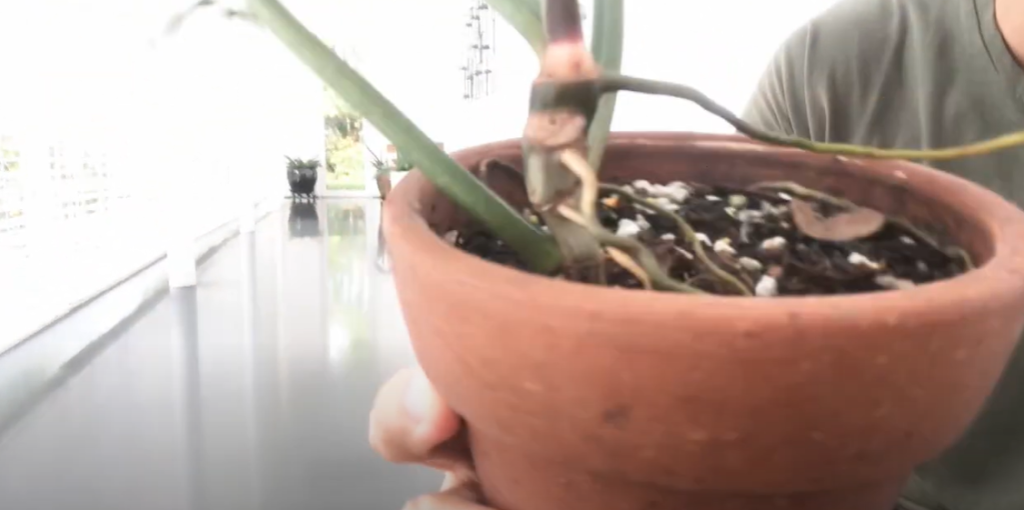
Soil & Potting
When it comes to potting soil, the Philodendron Tortum thrives in a well-draining mix that can efficiently retain moisture without becoming waterlogged, mimicking the plant’s natural rainforest habitat. A blend of moss, pearlite, and orchid dust is typically ideal. Peat moss holds moisture and allows for aeration, pearlite ensures proper drainage, and orchid bark adds structure and maintains a breathable, fresh air environment for the roots. When choosing a flower bed, opt for a pot with sufficient drainage holes to prevent water from becoming trapped, as this can lead to root rot. In terms of size, it is best to choose a pot that is proportional to the size of the plant. A larger plant pot can retain too a lot of water, potentially leading to root rot, while a smaller pot might restrict growth. If you notice that your Philodendron Tortum has become root-bound or its growth appears to have slowed despite favorable conditions, it may be time to repot into a slightly larger container. Always remember to be gentle when repotting to avoid damaging the root system. By providing the Philodendron Tortum with its preferred soil and pot conditions, you can cultivate a healthy and thriving plant.
Heat and Moisture
The Philodendron Tortum is a tropical plant, and as such, it thrives in warmer temperatures, typically between 60-75°F (15-23°C). It’s important to prevent sharp fluctuations in heat, which can stress the plant and hinder its development. In the cold season, keep the flower out of drafts on windows or doors to keep a consistent temperature. As for humidity, the Tortum, like many of its Philodendron counterparts, thrives in a high humidity environment. This mimics its natural habitat in the tropical rainforests. To maintain high humidity, regularly mist the plant, or consider using a humidifier. Alternatively, placing the plant’s pot on a tray filled with pebbles and a small amount of water can also help increase surrounding humidity levels. However, avoid letting the bottom of the pot touch the water, as this can lead to root rot. Ensuring the right temperature and humidity conditions will help your Philodendron Tortum to flourish, maintaining its exotic and captivating appeal.
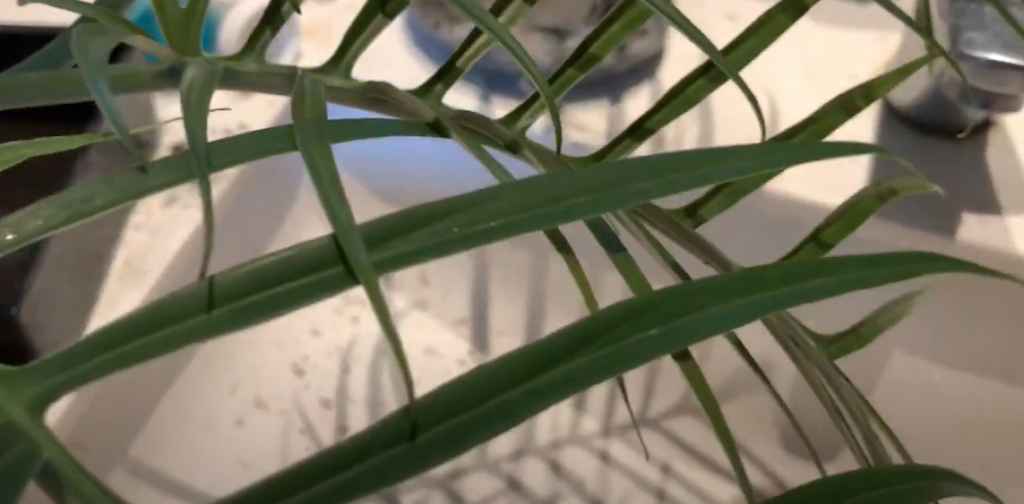
Fertilizing
The Philodendron Tortum benefits from regular feeding during its growing season, typically from spring through summer. A balanced, water-soluble fertilizer diluted to half strength is usually ideal. This should be applied every two to four weeks to support robust growth and maintain the plant’s vibrant, lush foliage. It’s important to note that, during the cooler months, the Tortum’s growth slows and it requires less frequent feeding. You should therefore reduce the frequency of fertilizing to once a month or even less. It’s also crucial to avoid fertilizing a dry plant as it can lead to root burn. Always water your Philodendron Tortum before applying fertilizer to create a buffer that will protect the roots. Remember, over-fertilization can lead to salt build-up in the soil which can damage the plant. If you notice leaf yellowing or browning, it might be a sign of over-fertilization. In that case, flush the soil thoroughly with water to wash away excess fertilizer. Following these fertilizing tips, your Philodendron Tortum will exhibit healthy growth and showcase its stunning, spiraling leaves.
Growth Rate & Repotting
The Philodendron Tortum is known for its relatively quick growth rate, particularly during its growing season from spring through summer. Under optimal conditions, its leaves can unfurl at a steady pace, showcasing its unique, spiral characteristic. However, the plant’s growth may slow down during the colder months or if its needs aren’t adequately met. As for repotting, it’s generally a good idea to repot your Philodendron Tortum every 2-3 years to accommodate its growth and replenish its soil. The best time to repot is in the spring, just as the plant is entering its growing season. When repotting, choose a container that’s one size larger than its current pot. Make sure to carefully loosen the root ball and trim away any dead or decaying roots before placing the plant in its new pot. Fill the pot with fresh, well-draining soil mix as described in the “Soil & Potting” section. Once repotted, water the plant thoroughly and place it in a warm, well-lit spot away from direct sunlight. With proper care, your Philodendron Tortum will continue to flourish and captivate with its distinctive, spiraling leaves.[1]
How To Propagate
Cuttings
Cuttings offer another effective method for propagating your Philodendron Tortum. After identifying a healthy stem with at least one leaf node, use a clean, sharp pair of pruning shears to cut the stem about an inch below the node. Remove any leaves near the base to expose the node as this is where the new roots will emerge. Optionally, you can dip the cut end into a rooting hormone to encourage root growth. Next, place the cutting into a container filled with fresh, well-draining potting mix. Ensure the cutting is securely firm in the soil and keep it in a warm, well-lit area away from direct sunlight. Maintain a consistently moist soil for the cutting to promote root growth. In a few weeks, you should see roots beginning to form and new growth appearing. Propagating through cuttings thus provides a great way to expand your collection of this unique and stunning plant.
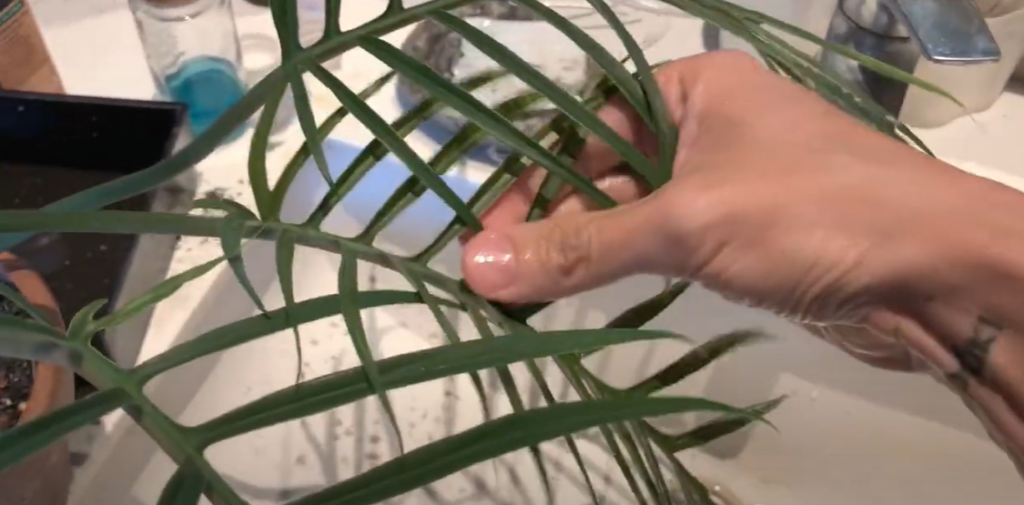
Air Layering
Air layering is yet another propagation method for the Philodendron Tortum, particularly useful for larger, mature plants. In this method, instead of cutting the stem and planting it, the stem is rooted while still attached to the parent plant. Start by identifying a healthy stem on the plant and making an upward slanting cut about one-third through the stem. Insert a toothpick or small stick into the cut to keep it open. Then, wet a handful of sphagnum moss and wring out any excess water. Enclose the cut area with the moist sphagnum moss and wrap it with a piece of clear plastic, securing it with twine or tape at both ends to create a mini greenhouse. Over time, roots will start to form within the moss. Once a substantial root system has developed, the new plant can be cut from the parent plant just below the root ball and potted up in a fresh, well-draining potting mix. This method of propagation, while slightly more time-consuming and complex, can ensure the successful growth and development of a healthy and robust Philodendron Tortum.[2]
Common Problems
The Philodendron Tortum, like any other plant, can encounter a few common problems. Over-watering is one such issue, which can lead to root rot, a serious condition that can be detrimental to the plant’s health. Symptoms of over-watering include yellowing leaves and a wilted, drooping appearance. If you suspect your Philodendron Tortum is getting too much water, reduce the watering frequency, and ensure the plant is in well-draining soil.
Additionally, your Philodendron Tortum may experience browning leaf tips, which can be a sign of low humidity or watering with hard water. To increase humidity, place your plant on a tray filled with pebbles and water, ensuring the plant pot is not in direct contact with the water. Alternatively, consider using a humidifier, especially during the drier winter months. If using tap water, let it sit out overnight before watering to allow chlorine and other impurities to evaporate.
With the right care and attention to these potential issues, your Philodendron Tortum can continue to grow and thrive, gracing your space with its unique, spiral leaves.[2]
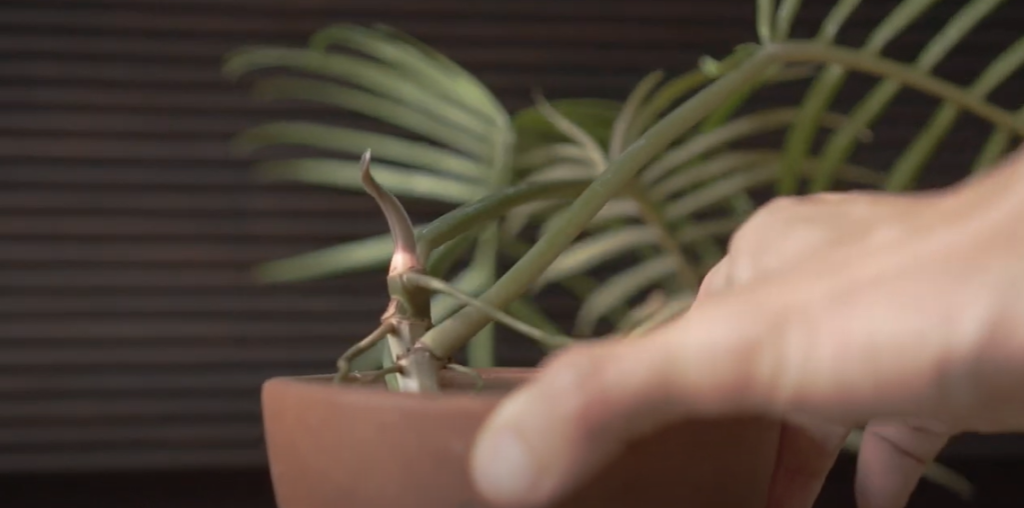
FAQ
How do you propagate a philodendron tortum?
Propagating a Philodendron Tortum can be done through multiple methods such as stem cuttings, air layering, and division.
- Stem Cuttings Method: Start with selecting a healthy stem with at least one leaf node. Using clean, sharp pruning shears, make a cut about an inch below the node. Remove any leaves near the base to expose the node – the place from which new roots will form. You may opt to dip the cut end into a rooting hormone, although this is not strictly necessary. Then place the cutting into a container filled with fresh, well-draining potting mix, and ensure it is securely planted. Place the new plant in a warm, well-lit area, away from direct sunlight. Maintain a consistently moist soil and after a few weeks, roots should begin to form and new growth will appear.
- Air Layering Method: This is particularly useful for larger, mature plants. Here, instead of cutting the stem and planting it, the stem is rooted while still attached to the parent plant. Make an upward slanting cut about one-third through a healthy stem, and insert a toothpick or small stick to keep it open. Enclose the cut area with moist sphagnum moss and secure it with clear plastic, creating a mini greenhouse. Over time, roots will start to form within the moss. Once a substantial root system has developed, the new plant can be separated from the parent plant and potted up in a fresh, well-draining potting mix.
- Division Method: This is a propagation method that involves splitting the plant into two or more parts. Each part should have at least one stem and a healthy root system. After splitting the plant, repot each section in fresh, well-draining potting mix. Division is best done during repotting and is especially suitable for mature, crowded plants.
Each of these methods can help in successfully propagating your Philodendron Tortum, allowing you to expand your collection and share this unique plant with others.
Does Philodendron Tortum climb?
Primarily a terrestrial plant, the Philodendron Tortum, also known as the Tortum Philodendron, is a unique species within the Philodendron family. Unlike some other Philodendron species, it typically does not exhibit climbing tendencies. Instead, it adopts a bushy growth habit, spreading its distinctive, deeply lobed leaves horizontally. However, with proper support and care, this fascinating plant can be encouraged to grow upwards, defying its natural inclination.
To encourage vertical growth, a moss pole or other form of support can be used. This provides the necessary structure for the Philodendron Tortum to grow in a more upward direction, adding an intriguing visual element to any indoor or outdoor space. It’s worth noting that even with support, the natural growth pattern of the Philodendron Tortum tends to be more sprawling than climbing. Its aerial roots may not cling to supports as readily as those of true climbing Philodendrons, adding to its distinct charm.
With its unique growth habit and distinctive leaves, the Philodendron Tortum is a captivating addition to any plant collection. Whether allowed to grow horizontally or coaxed to grow vertically, this plant is sure to add a touch of natural beauty and intrigue to your surroundings.
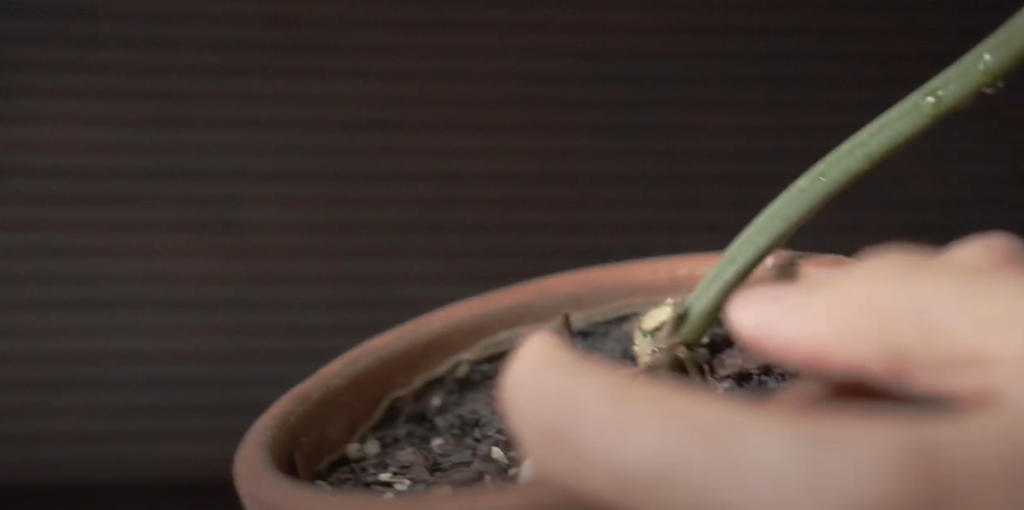
What is the growth habit of the Philodendron tortum?
The Philodendron Tortum has a unique growth habit that sets it apart from many of its peers. Unlike typical philodendrons that are vine-like climbers, the Philodendron Tortum grows in a bushy, sprawling pattern. It produces a profusion of deeply lobed, spiral leaves that unfurl horizontally, creating an intricate display of greenery that can span several feet in width. This terrestrial plant tends to spread outwards rather than upwards. Over time, with the right conditions, the plant can become quite large, making it an excellent centerpiece for indoor or outdoor gardens. While it can be coaxed to grow vertically with support, it’s important to remember that its natural growth habit is more akin to a bush than a vine. Its aerial roots may not readily cling to supports like those of climbing philodendrons, giving this unique plant its distinctive, horizontal spread.
Does Philodendron tortum need a moss pole?
Unlike many other climbing Philodendron varieties, Philodendron Tortum does not necessarily require a moss pole to grow. Its natural growth habit is to spread out horizontally, creating a bushy and sprawling display of deeply lobed, spiral leaves. This unique characteristic adds a touch of intrigue and charm to any indoor space.
However, if you wish for Philodendron Tortum to grow more vertically, providing a moss pole or other form of support can help guide its growth. By offering additional support, you can encourage the plant to reach greater heights and create an even more impressive visual impact.
It is important to note that Philodendron Tortum’s aerial roots may not cling to the support as readily as other climbing Philodendron species. While a moss pole can be used for vertical growth, it is not a requirement for this particular species. This flexibility allows you to choose the growth style that best suits your aesthetic preferences and the available space in your home or office.
Do philodendrons like climbing or hanging?
Most philodendrons are climbing plants in their natural habitats and will readily climb or trail in indoor settings as well. This makes them ideal candidates for hanging baskets or for placement on high shelves where their trailing vines can be shown off. Some philodendrons, like the Philodendron hederaceum, are particularly well-suited for hanging due to their long, trailing growth habit. However, as we’ve already discussed, not all Philodendrons share these climbing or hanging tendencies. For instance, the Philodendron Tortum is more of a bushy plant that prefers to grow outwards rather than upwards. So while many philodendrons do like climbing or hanging, it’s always best to reference the specific tendencies of the species you are caring for.
When considering the placement of your philodendron, it’s important to take into account its natural environment and growth habits. Some philodendrons, such as the Philodendron gloriosum, thrive in low light conditions and can be placed in corners or areas with less direct sunlight. On the other hand, species like the Philodendron bipennifolium prefer brighter light and can be positioned near windows or in well-lit rooms.
Additionally, philodendrons are known for their air-purifying properties, making them great additions to any indoor space. They have the ability to filter out toxins from the air, helping to create a cleaner and healthier environment. So not only do they add beauty and greenery to your home, but they also contribute to improved air quality.
In summary, philodendrons are versatile and adaptable plants that can thrive in various indoor settings. Whether you choose to let them climb, trail, or grow outwards, they are sure to bring a touch of nature and elegance to your space while providing numerous benefits.
Can Philodendron grow on a wall?
Yes, certain species of Philodendron are indeed capable of growing on walls, especially when provided with the right support and optimal conditions. One such species that readily comes to mind is the Philodendron hederaceum, commonly known as the heartleaf Philodendron. These natural climbers possess the remarkable ability to attach themselves to surfaces such as moss-covered or bark-covered walls, thanks to their aerial roots. These roots not only serve as anchors but also enable the plants to absorb the necessary moisture and nutrients for sustained growth.
However, it is important to note that not all Philodendron species exhibit this particular growth habit. For example, the Philodendron Tortum, as we discussed earlier, tends to have a more terrestrial nature, with a bushy and horizontally spreading growth pattern. Therefore, while it is certainly possible for certain Philodendrons to flourish on a wall, the suitability of this growth method largely depends on the specific species in question. It is always advisable to conduct thorough research on the specific needs and growth habits of your Philodendron before embarking on any wall growth endeavors. By doing so, you can ensure that you are providing the optimal conditions for your plant’s success.
Useful Video: Philodendron Tortum Propagation
Conclusion
Caring for a Philodendron Tortum can be an incredibly unique and rewarding experience. This fascinating plant stands out not only for its distinct growth habit but also for its striking leaf structure. Unlike most of its vine-like counterparts, the Philodendron Tortum thrives in a horizontal, bush-like growth pattern, adding a touch of uniqueness to any indoor or outdoor garden.
One of the most captivating aspects of this species is its ability to showcase a sprawling display of deeply lobed, spiral leaves. While it can be encouraged to grow vertically with the help of support like a moss pole, the true beauty of the Philodendron Tortum lies in its natural tendency to sprawl. Its sprawling growth habit creates a captivating and visually appealing presence wherever it is placed.
It is important to appreciate and understand the varied growth habits within the diverse genus of Philodendron. Whether your Philodendron is climbing, hanging, or sprawling, each growth habit adds its own charm and character to the plant. To ensure the optimal care and well-being of your Philodendron Tortum, it is crucial to research and understand its specific needs and tendencies.
By providing the right care and attention, you can ensure that your Philodendron Tortum remains healthy and thrives in its environment. Embrace the unique growth habits of this remarkable plant and enjoy the beauty it brings to your space.
References
- https://goodplantcare.com/philodendron-tortum/
- https://plantophiles.com/plant-care/philodendron-tortum/




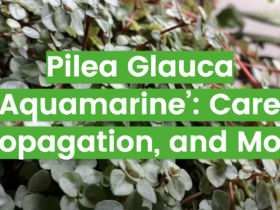


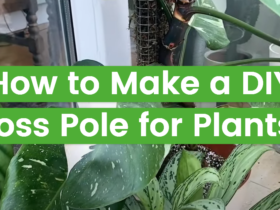

Leave a Review